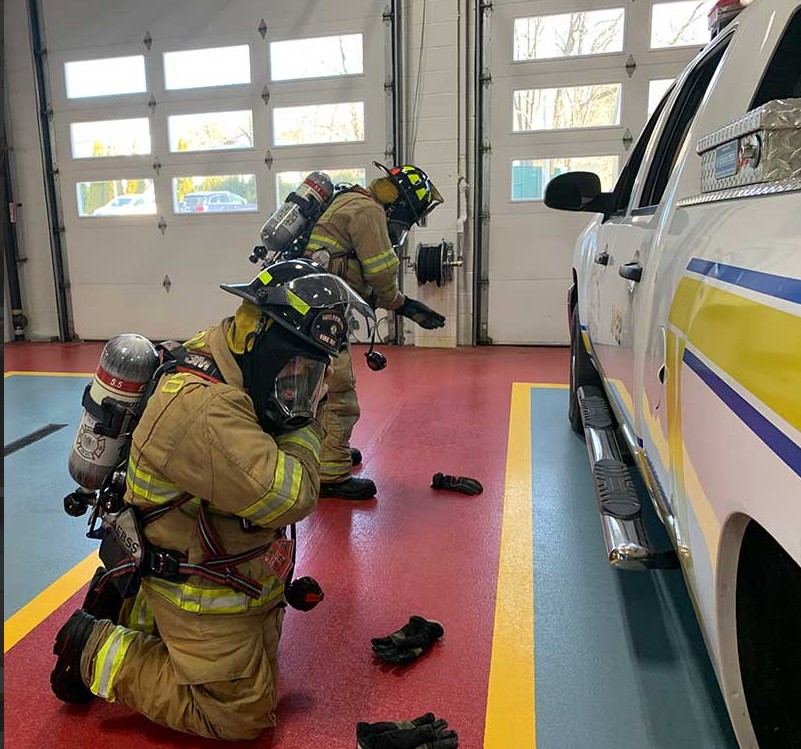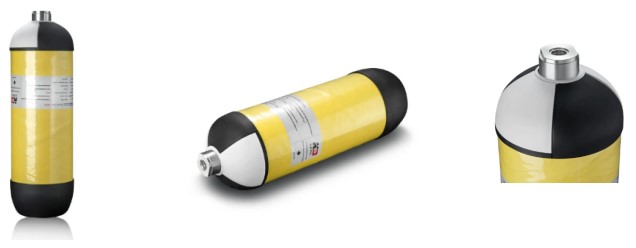For first responders and medical personnel, every second counts. Their work demands a balance between carrying life-saving equipment and maintaining mobility and stamina in often-stressful situations. One crucial piece of equipment, the breathing apparatus, has traditionally posed a challenge due to its weight. However, a revolution is underway with the increasing adoption of lightweight carbon fiber cylinders for medical air supplies. This article explores the advantages of carbon fiber cylinders and how they are transforming emergency response for the better.
The Burden of Weight: Challenges with Traditional Steel Cylinders
Traditional breathing apparatus utilized steel cylinders to store the compressed air supply. While robust and reliable, steel comes with a significant drawback: weight. A fully charged steel cylinder can weigh upwards of 30 pounds. For firefighters battling blazes, paramedics navigating smoke-filled corridors, or medical personnel assisting patients in confined spaces, every ounce counts. The weight of the breathing apparatus can lead to:
-Reduced Endurance: Carrying heavy equipment for extended periods can lead to fatigue, hindering performance and decision-making.
-Limited Mobility: The bulk and weight of steel cylinders can restrict movement, especially in tight spaces or when climbing stairs.
-Increased Injury Risk: Fatigue and reduced mobility can make first responders more susceptible to slips, falls, and other injuries.
A Breath of Fresh Air: The Advantages of Carbon Fiber Cylinders
Carbon fiber cylinders offer a revolutionary solution, boasting an exceptional strength-to-weight ratio. These cylinders are meticulously crafted by weaving carbon fibers into a resin matrix. The resulting composite material is incredibly strong, capable of withstanding the high pressures required for medical air supply. However, the key advantage lies in its remarkably lightweight nature. Compared to steel cylinders, carbon fiber counterparts can be up to 70% lighter. This translates to a significant advantage for first responders and medical personnel:
-Enhanced Endurance: Reduced weight means less fatigue, allowing personnel to operate effectively for longer durations.
-Improved Mobility: Lighter equipment grants greater freedom of movement, crucial for navigating challenging environments.
-Increased Safety: Reduced fatigue and improved mobility contribute to better decision-making and a lower risk of injuries.
Beyond weight reduction, carbon fiber cylinders offer additional benefits:
-Corrosion Resistance: Unlike steel, carbon fiber is immune to rust and corrosion, ensuring long-term reliability.
-Durability: Carbon fiber composites are incredibly strong and can withstand significant impacts, offering better protection for the air supply.
-Improved Design: The lighter weight allows for more ergonomic designs, enhancing comfort and user experience.
Case Studies: How Carbon Fiber Cylinders are Saving Lives
The benefits of carbon fiber cylinders are not just theoretical. Real-world examples showcase their positive impact on emergency response:
-Firefighting: Imagine a firefighter battling a blaze in a multi-story building. The lighter weight of carbon fiber cylinders allows firefighters to climb stairs with greater ease, navigate tight spaces more efficiently, and operate for extended periods without succumbing to fatigue. This can make a significant difference in saving lives and property.
-Medical Emergencies: Paramedics attending a medical emergency often need to act quickly. The lighter weight of carbon fiber cylinders allows them to move swiftly and provide immediate medical assistance to patients in any location.
-Confined Space Rescue: When rescuing personnel trapped in confined spaces, every second is crucial. Lighter breathing apparatus with carbon fiber cylinders allows rescue teams to enter and navigate these challenging environments with greater ease, increasing the chances of a successful rescue.
The Future of Emergency Response: Continuous Innovation
The development of carbon fiber cylinders for medical air supplies is a dynamic field with ongoing advancements:
-Nanotechnology Integration: Researchers are exploring incorporating nanomaterials into the composite matrix, potentially leading to further weight reduction and enhanced durability.
-Sensor Integration: Embedding sensors into the cylinders can monitor air pressure levels and warn personnel of potential issues.
-Smart Manufacturing Techniques: Advanced manufacturing processes are constantly being developed to optimize the design and performance of carbon fiber cylinders.
Conclusion: A Breath of Hope and Innovation
The adoption of carbon fiber cylinders is revolutionizing emergency response. By offering a lighter, more efficient solution for medical air supplies, carbon fiber is helping first responders and medical personnel work more effectively, navigate challenging situations with greater ease, and ultimately, save more lives. As research and innovation in this field continue, the future of emergency response looks even brighter, with carbon fiber playing a pivotal role in ensuring the safety and well-being of both responders and the communities they serve
Post time: May-22-2024


